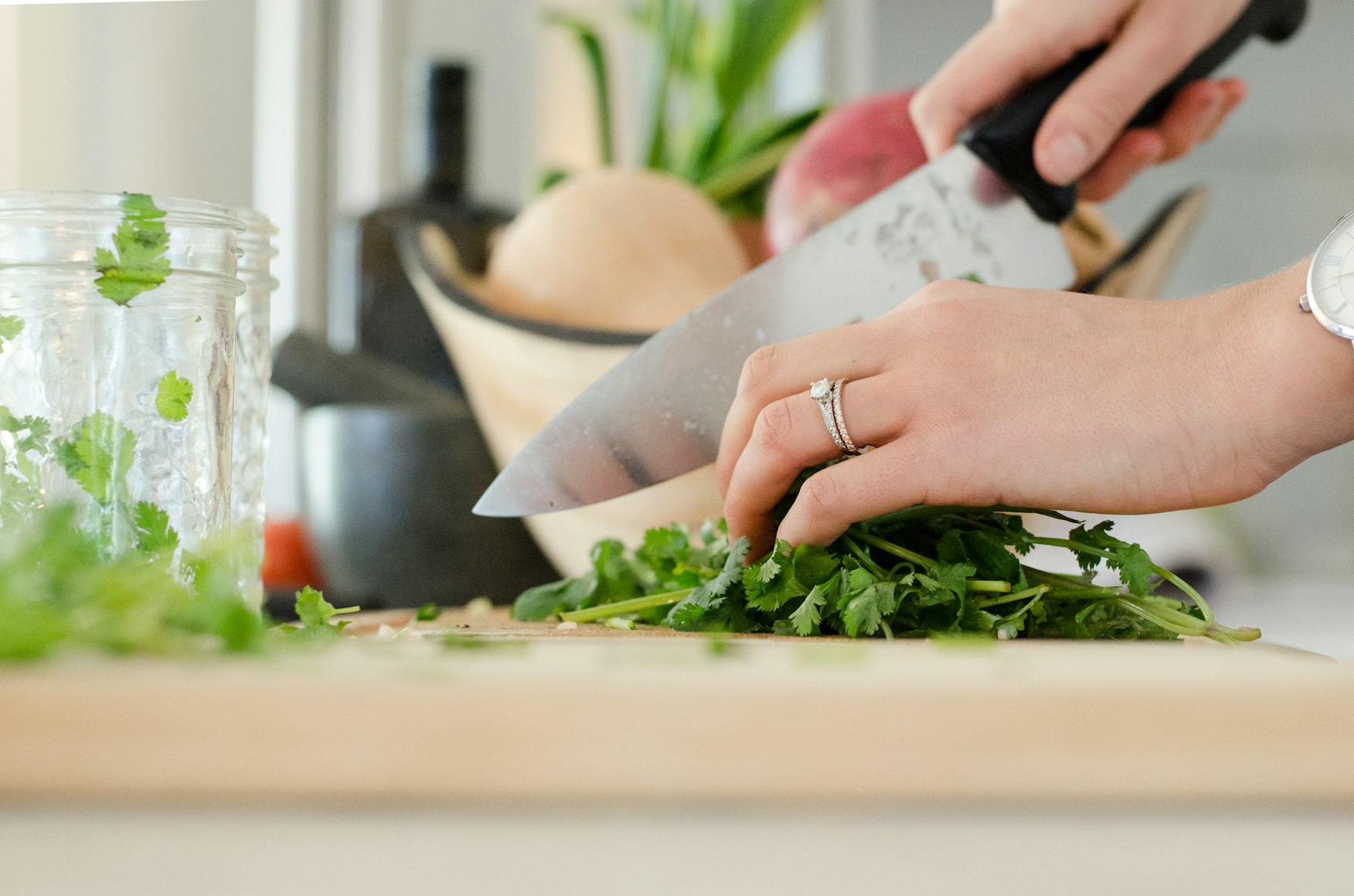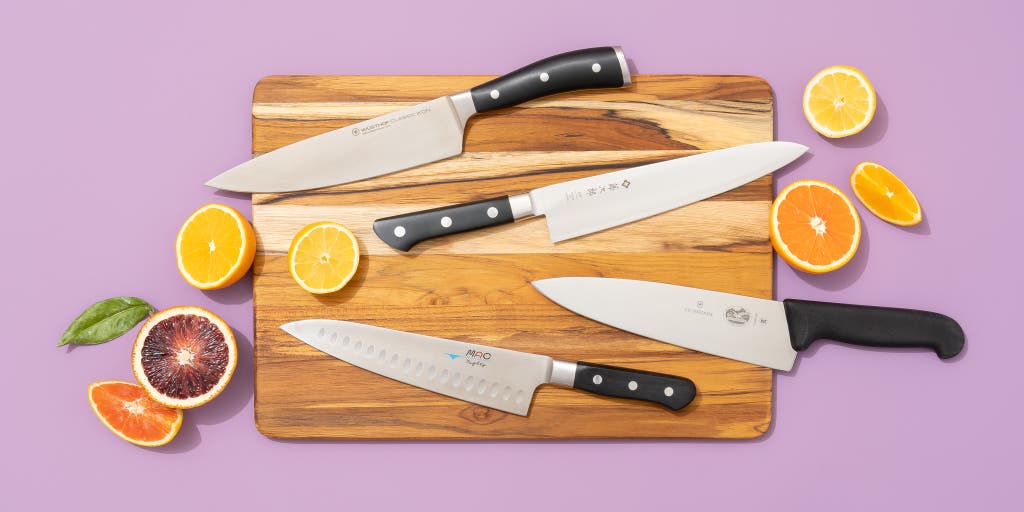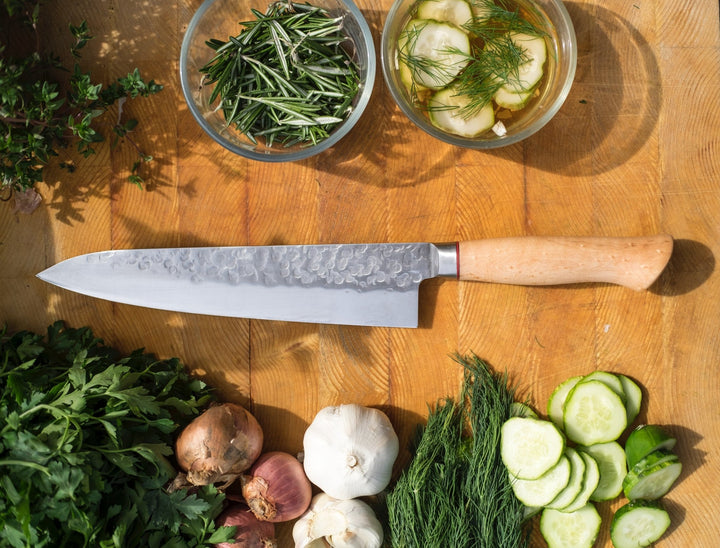Forging a chef knife is a rewarding experience for those who love working with their hands. Not only does it allow for the creation of a customized kitchen tool, but the craft also embodies a tremendous blend of art and science. This guide will walk you through the essential steps required to forge a chef knife, ensuring that you gain a deep understanding of the process and its intricacies.
As an Amazon Associate, I earn from qualifying purchases.

Why Forging a Chef Knife is Here to Stay
The art of forging knives has been around for centuries, and for good reason. A hand-forged knife possesses unique characteristics and a level of quality that mass-produced knives simply cannot match. Whether you are a kitchen hobbyist or an aspiring blacksmith, learning how to forge a chef knife is a skill that will serve you well for years to come.

Materials Needed for Forging a Chef Knife
To begin the process of making your own chef knife, you will need a few essential materials. These include:
- High carbon steel
- Forge
- Anvil
- Hammer
- Tongs
- Grinding tools
- Quenching oil
- Sandpaper
- Handle materials
Having these materials on hand will ensure that you are well-prepared to embark on your knife-making journey.

Choosing the Right Steel
The choice of steel is critical when forging a chef knife. High carbon steel, such as 1095 or O1 tool steel, is highly recommended due to its superior edge retention and ease of sharpening. It’s important to select a steel that is both durable and easy to work with, especially if you are new to knife making.

Setting Up Your Workspace
Before you begin forging your chef knife, make sure that your workspace is well-organized and safe. A clutter-free environment will allow you to focus on the task at hand and minimize the risk of accidents. Ensure that your forge, anvil, and other tools are securely positioned and easily accessible.
Step-by-Step Guide to Forging a Chef Knife
1. Heating the Steel
Start by heating the piece of steel in your forge until it becomes a dull red color. This usually occurs at temperatures around 1,500F. Use tongs to handle the hot steel safely.
2. Shaping the Blade
Once the steel is heated, transfer it to the anvil and begin shaping the blade using a hammer. Focus on creating the basic outline of the blade, taking care to evenly distribute the hammer blows to avoid warping.
3. Beveling the Edge
Beveling refers to the process of forming the knife’s edge. Use a hammer to create a taper along one side of the blade. This step will determine the knife’s cutting capability, so take your time to achieve a balanced and sharp bevel.
4. Creating the Tang
The tang is the part of the blade that extends into the handle. Forming a well-defined tang is crucial for attaching the handle securely. Hammer the steel to shape the tang, ensuring it is straight and proportional to the blade.
5. Heat Treating
Heat treating is a critical step in the knife-making process that involves hardening and tempering the steel. First, heat the blade to a bright red color (around 1,500F) and then quench it in oil to rapidly cool it. After quenching, the blade will be very hard but also brittle. To alleviate this brittleness, temper the blade by heating it again to around 400F and allowing it to cool slowly.
6. Grinding the Blade
Once the blade has been properly heat treated, it is time to grind the edge to its final shape. Use a belt grinder or a series of progressively finer grinding stones to hone the blade to a razor-sharp edge. This step requires precision and patience, as any mistakes can compromise the blade’s cutting performance.
7. Polishing the Blade
After grinding, polish the blade to achieve a smooth, reflective surface. Use sandpaper or a polishing wheel to remove any scratches and imperfections, resulting in a professional-looking finish.
8. Attaching the Handle
The handle is an important part of the chef knife, providing comfort and control during use. Choose a durable, non-slip material such as wood, micarta, or G10. Attach the handle to the tang using epoxy adhesive and secure it with pins or rivets. Once the handle is set, shape it to fit comfortably in your hand.
9. Final Touches
Inspect the entire knife for any imperfections or areas that need adjustment. Make any necessary refinements to ensure that the knife is balanced, comfortable to hold, and performs well in the kitchen.
Common Mistakes to Avoid
When forging your chef knife, it is important to be aware of common mistakes that can affect the final product. These include:
- Overheating the steel: This can lead to grain growth and reduce the blade’s toughness.
- Uneven hammering: Inconsistent hammer blows can result in a warped or uneven blade.
- Improper heat treatment: Failing to properly harden or temper the blade can lead to a brittle or soft knife.
- Poor handle attachment: Ensuring a secure and comfortable handle is crucial for usability.
By avoiding these mistakes, you will be able to produce a high-quality chef knife that is both functional and aesthetically pleasing.
Maintenance and Care for Your Hand-Forged Chef Knife
Proper maintenance and care will ensure that your hand-forged chef knife remains in excellent condition. Here are some tips to keep in mind:
- Regular sharpening: Keep the blade sharp using a whetstone or honing rod.
- Cleaning: Wash the knife by hand with mild soap and water, and dry it immediately to prevent rust.
- Storage: Store the knife in a knife block or on a magnetic strip to protect the edge and prevent accidents.
- Oiling: Apply a light coat of food-safe oil to the blade to prevent corrosion.
Benefits of a Hand-Forged Chef Knife
There are several benefits to using a hand-forged chef knife:
- Customizability: You can create a knife tailored to your specific preferences and needs.
- Quality: Hand-forged knives often have superior edge retention and durability compared to mass-produced alternatives.
- Aesthetic appeal: The craftsmanship and unique patterns of a hand-forged knife make it a beautiful addition to any kitchen.
Investing time and effort into forging your chef knife will result in a one-of-a-kind tool that enhances your culinary experience.
Famous Knife Forgers to Follow
Learning from experienced knife forgers can provide valuable insights and inspiration for your knife-making journey. Some renowned knife forgers include:
- Bob Kramer: Known for his exceptional craftsmanship and innovative designs.
- Murray Carter: A Master Bladesmith with a focus on traditional Japanese techniques.
- Jason Knight: A skilled knife maker and instructor featured on TV shows like Forged in Fire.
Frequently Asked Questions (FAQs)
1. How long does it take to forge a chef knife?
The time required to forge a chef knife can vary depending on experience and the complexity of the design. On average, it can take anywhere from 10 to 20 hours to complete a knife.
2. Can I forge a chef knife at home?
Yes, it is possible to forge a chef knife at home with the right tools and a safe workspace. However, it is important to have a good understanding of the process and follow safety guidelines to ensure successful results.
3. What type of handle material is best for a chef knife?
The best handle material for a chef knife depends on personal preference. Popular options include wood, micarta, and G10, all of which offer durability and a comfortable grip.
As an Amazon Associate, I earn from qualifying purchases.
Conclusion
Forging a chef knife is a tremendous journey that combines skill, creativity, and precision. By following this comprehensive guide, you will be well-equipped to create a hand-forged chef knife that is both functional and beautiful. Remember to take your time, pay attention to detail, and enjoy the process of creating a unique kitchen tool that will serve you well for years to come.
For more information on different types of kitchen knives, visit Healthy Kitchen 101.
As an Amazon Associate, I earn from qualifying purchases.


